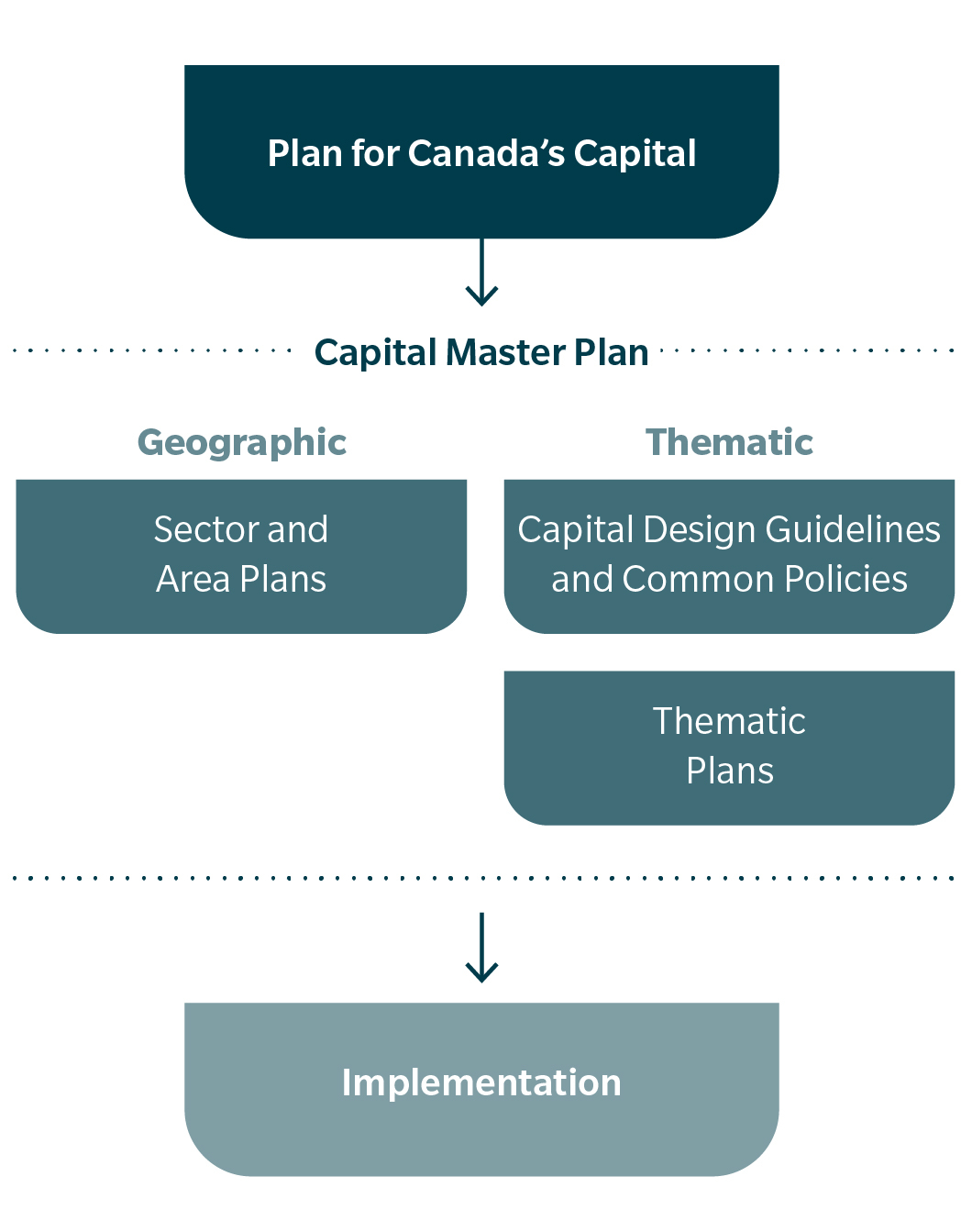The NCC has a unique mandate, “…to prepare plans for and assist in the development, conservation and improvement of the National Capital Region in order that the nature and character of the seat of the Government of Canada may be in accordance with its national significance” (section 10.1 of the National Capital Act, R.S.C., 1985, c. N-4).
The Capital Design Guidelines form part of the NCC’s planning framework, a collection of plans and policies that direct land use planning and design in the National Capital Region. The Capital Design Guidelines are a collection of planning and design policies based on sound theory and international best practices, specifically tailored to the Capital context. The Capital Design Guidelines complement the geographic and thematic plans of the Capital planning framework by providing universal design cues and principles that transcend all sectors. They must therefore be considered and interpreted in conjunction with the NCC plans, policies and strategies that are relevant to the site.

Planning Framework
The guidelines provide guidance across the National Capital Region. They complement other NCC land use plans. Where there are inconsistencies between these guidelines and the directions of a specific land use plan, that land use plan takes precedence.
The guidelines apply principally to Capital-building projects. In addition, designers will also have regard for other guidance documents, such as municipal plans.
Designers will have regard for many competing and complementary objectives. To have regard for is not to conform to, but to give due consideration to and analysis of. Each project is to respond substantially to the intent of these guidelines, with the goal of achieving design excellence.
More information regarding the Capital planning framework can be found on the NCC’s website under the section Our Plans.

